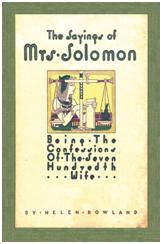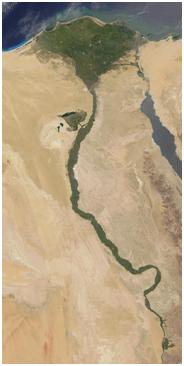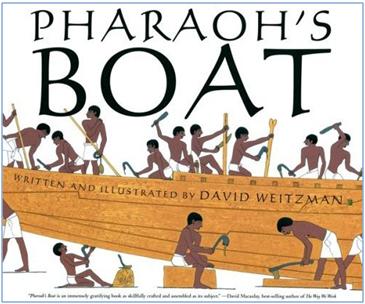It’s been a busy year! And it’s only June!
It occurred to me that I should take a minute and update friends & gentle readers on what’s been going on at Greenleaf Press. A lot, actually. I forget, in the day-to-day press of the urgent some of the significant things that we have accomplished. Here’s a quick review:


Last summer saw the re-launch of Valerie Bendt’s Reading Made Easy and the publication of Cyndy Shearer’s Greenleaf Guide to Medieval Literature.
This year, Greenleaf has released three new titles and we have several more exciting projects under development.
| In March we released Handwriting by George Volume 2. | |
| In April we released Voices of the Renaissance and Reformation. | |
| In May we released The Sayings of Mrs. Solomon. |
Projects under development:
Famous Men of the 16th & 17th Century – I am happy to report that there are now twelve chapters written, out of a projected 28. Here’s the current, working version of the Table of Contents:
Introduction
- Catherine de’ Medici (1519-1589)
- Henry of Navarre (1553-1610)
- Elizabeth I (1533-1603)
- Sir Francis Drake (1540-1595)
- Sir Walter Raleigh (1552-1618)
- James I (1566-1625)
- Matteo Ricci (1552-1610)
- William Shakespeare (1564-1616)
- John Smith (1580-1631)
- Wallenstein (1583-1634)
- Gustavus Adolphus (1594-1632)
- Samuel de Champlain (1570-1635)
Galileo (1564-1642)
Cardinal Richelieu (1585-1642)
Charles I (1600-1649)
William Bradford (1590-1657)
John Winthrop (1588-1649) combine with Bradford?
Oliver Cromwell (1599-1658) may be too much overlap with Charles I?
Blaise Pascal (1623-1662)
Rembrandt (1606-1669)
John Milton (1608-1674)
Johannes Vermeer (1632-1675)
Charles II (1630-1685)
Jan Sobieski (1629-1696)
William of Orange (1650-1702)
John Locke (1632-1704)
Johan Pachelbel (1653-1706)
Louis XIV (1638-1715)
When this project is finished, I plan to continue the series with the next volumes, Famous Men of the 18th Century, Famous Men of the 19th Century, and Famous Men of the 20th Century. I’m already looking forward to doing the chapters on Ronald Reagan, Margaret Thatcher, and Pope John Paul II!
Handwriting by George, volumes 3 & 4 should be ready to go to the printer shortly. When all four volumes are out, we will have covered all 100 of George Washington’s maxims. Volumes 1 & 2 included the first 55.
 Cyndy is working on editing the text of Alfred Church’s The Odyssey for Boys and Girls, which will join her wonderful edition of Church’s The Iliad for Boys and Girls (Greenleaf title: The Story of the Iliad) which we published in 2004. She is also working on the next volume in her high school inductive literature guides, The Greenleaf Guide to Early Modern Literature. We don’t have firm dates yet, but Cyndy’s high school guides are based on ten years teaching in local tutorial and co-op programs. The Ancient Lit and Medieval Lit guides are what she uses for her 9th grade and 10th grade classes. The Early Modern Guide and 20th Century Guide already exist and she’s been teaching these classes at the Schaeffer Study Center for the past six years. But she won’t let me publish them until she’s revised them to her satisfaction!
Cyndy is working on editing the text of Alfred Church’s The Odyssey for Boys and Girls, which will join her wonderful edition of Church’s The Iliad for Boys and Girls (Greenleaf title: The Story of the Iliad) which we published in 2004. She is also working on the next volume in her high school inductive literature guides, The Greenleaf Guide to Early Modern Literature. We don’t have firm dates yet, but Cyndy’s high school guides are based on ten years teaching in local tutorial and co-op programs. The Ancient Lit and Medieval Lit guides are what she uses for her 9th grade and 10th grade classes. The Early Modern Guide and 20th Century Guide already exist and she’s been teaching these classes at the Schaeffer Study Center for the past six years. But she won’t let me publish them until she’s revised them to her satisfaction!
 As always, we continue to scour the publisher’s catalogs to find the best children’s books published each year. The outstanding selection this year, so far, would have to be Pharaoh’s Boat. I can’t say enough good things about this book. Full review is still on the blog.
As always, we continue to scour the publisher’s catalogs to find the best children’s books published each year. The outstanding selection this year, so far, would have to be Pharaoh’s Boat. I can’t say enough good things about this book. Full review is still on the blog.
To get the latest reviews of new books and news about projects, got to the Greenleaf Press website and sign up for the Greenleaf newsletter by clicking on “Store” and logging yourself in (if you don’t have an account, you can create one). In the right-hand column, there is a green box titled “My Account.” It’s the third one from the top. Click on the My Account link in the box and you can subscribe (or unsubscribe) to the newsletter.
– Rob Shearer
(Publisher, Editor, sometime writer, husband & dad – not necessarily in that order!)



 The importance of understanding Egyptian history and culture can hardly be over-estimated. Egypt is the country mentioned most often in the Old Testament. Israel’s prophets foretell the future not just for Israel, but for Egypt as well.
The importance of understanding Egyptian history and culture can hardly be over-estimated. Egypt is the country mentioned most often in the Old Testament. Israel’s prophets foretell the future not just for Israel, but for Egypt as well.
 To tell the story of their discovery and re-assembly, Weitzman switches to a more modern 3-dimensional representational style. The story of the painstaking research that went into re-assembling the boat is as fascinating as the story of their original construction. It was a 3-dimensional jigsaw puzzle with 1,200+ pieces, and no pictures or instructions. Before the Egyptian archeologist, Ahmed Youssef Moustafa, chief of the Restoration Department of the Egyptian Antiquities Service was satisfied, the boat had been put together and taken apart five times. Each time, the team of archeologists learned something new. To solve several particularly difficult problems, Ahmed went to modern Egyptian boat-makers on the banks of the Nile and served as an apprentice, asking questions about the details of the techniques they used. It turns out that many things have stayed the same for over 4,000 years.
To tell the story of their discovery and re-assembly, Weitzman switches to a more modern 3-dimensional representational style. The story of the painstaking research that went into re-assembling the boat is as fascinating as the story of their original construction. It was a 3-dimensional jigsaw puzzle with 1,200+ pieces, and no pictures or instructions. Before the Egyptian archeologist, Ahmed Youssef Moustafa, chief of the Restoration Department of the Egyptian Antiquities Service was satisfied, the boat had been put together and taken apart five times. Each time, the team of archeologists learned something new. To solve several particularly difficult problems, Ahmed went to modern Egyptian boat-makers on the banks of the Nile and served as an apprentice, asking questions about the details of the techniques they used. It turns out that many things have stayed the same for over 4,000 years.